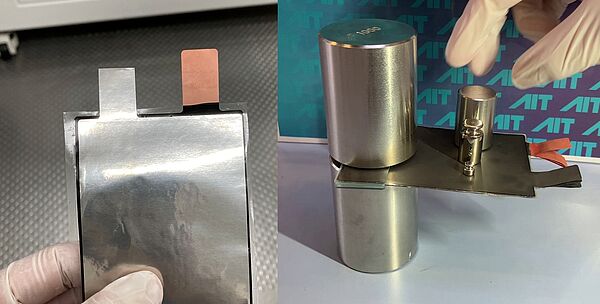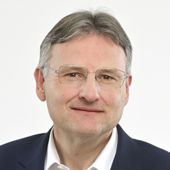The AIT-led European research project SOLIFLY (Semi-SOlid-state LI-ion Batteries FunctionalLY Integrated in Composite Structures for Next Generation Hybrid Electric Airliners) has successfully reached its final phase. Over a period of three years, a high-level European consortium led by the AIT Austrian Institute of Technology has made significant progress in the field of aviation electrification.
The development focused on special aircraft components with a dual function: they have mechanical-structural properties and can be integrated into the supporting structure while also serving as electrical energy storage devices. The aim was to support the sustainable electrification of aviation. The multifunctionality of these components is intended to increase overall system efficiency. The simultaneous storage of electrical energy and the preservation of mechanical strength contribute to a reduction in system weight.
Technological breakthroughs for the aviation of tomorrow
Aviation faces the challenge of reducing its environmental impact while at the same time meeting the growing demand for mobility. The SOLIFLY project marks an important step towards more sustainable aviation. It has developed innovative battery technologies that make the operation of aircraft more efficient and environmentally friendly. Energy storage systems play a central role in electrification and must comply with the strict aviation guidelines. These include batteries with a high energy density and the highest safety standards. However, aviation-grade battery technologies and systems for wide-body aircraft are still at an early stage of development. This is where the SOLIFLY project, which is researching multifunctional energy storage systems, comes in
A key innovation of the project is the novel, future-proof load-bearing semi-solid-state electrochemistry. This is based on high energy density active materials and a non-flammable, structural electrolyte. The formulation had to be compatible with aerospace-recognized structural materials and manufacturing processes, such as autoclave curing. This technology was implemented in two different concepts for structural battery cells. The first concept, after the initial development phase, has a specific energy of 50 Wh/kg and a modulus of elasticity of 10 GPa. A series of larger, multi-layer structural battery cells was produced for the multifunctional project demonstrator. The second concept utilizes carbon fibers both as a structural element and as a current collector. This variant is currently less mature, particularly in terms of electrical performance and scalability.
Another success of the project was the development of an approach to integrate structural battery cells into aviation-grade, high-strength carbon composite components without compromising their mechanical properties. This was demonstrated in the multifunctional project demonstrator, a high-strength, stiffened panel chosen as a representative standard component. This proved that the integration of energy storage systems is compatible with the high mechanical demands of aviation.
Intensive collaboration with the aviation industry
A key success factor of the SOLIFLY project was the close interdisciplinary collaboration between research centers (AIT, ONERA, CIRA), universities (Vienna and Naples), and experts from the battery (CustomCells) and aviation industries (Piaggio Aerospace, Pipistrel Vertical Solutions, Dassault Aviation, and FACC). The aviation industry was involved from the beginning through the advisory board to ensure that the developed technologies have the potential for industrial implementation and thus contribute to the decarbonization of aviation.
Outlook and next steps
The SOLIFLY project has established a foundation to quantify and substantiate the potential of multifunctional energy storage for the electrification and decarbonization of aviation. Building on these results, the project partners are already taking the next steps towards further development and practical implementation of this innovative aviation technology, as seen in the follow-up project MATISSE.
AIT researcher and SOLIFLY coordinator Helmut Kühnelt emphasizes the project's significance for the future of aviation: "With SOLIFLY, we have demonstrated that integrating battery technology into structural components is possible without significantly compromising their mechanical properties. This is a crucial step for multifunctional energy storage as a key technology for future climate-neutral aviation. Through close collaboration between applied research and industry, we ensured that our developments are both pioneering and practical."
The Scientific Director of AIT, Andreas Kugi, adds: "This is a flagship project in the collaboration between universities, RTOs, and industry for the development of new, customized multifunctional battery solutions for aviation. AIT will continue to work on optimizing these solutions and will support the development of the European Material Acceleration Platform to make innovation cycles even more efficient."
AIT Managing Director Brigitte Bach comments: "The SOLIFLY project marks a significant advance in the framework of the Green Deal for aviation. Together with our industry partners, we have developed innovative technologies that not only increase efficiency but also reduce emissions. This research is crucial for sustainable electrification of aviation and underscores our commitment to a more climate-friendly future."
About the project
SOLIFLY was funded by the Clean Sky 2 Joint Undertaking under the European Union's Horizon 2020 research and innovation program, grant agreement No. 101007577.
Consortium:
- AIT Austrian Institute of Technology – Center for Transport Technologies (Austria)
- ONERA, The French Aerospace Lab (France)
- CustomCells (Germany)
- University of Vienna – Polymer & Composites Engineering Group (Austria)
- Università degli Studi di Napoli Federico II – Department of Industrial Engineering / Aerospace Engineering (Italy)
- CIRA – Italian Aerospace Research Centre (Italy)






